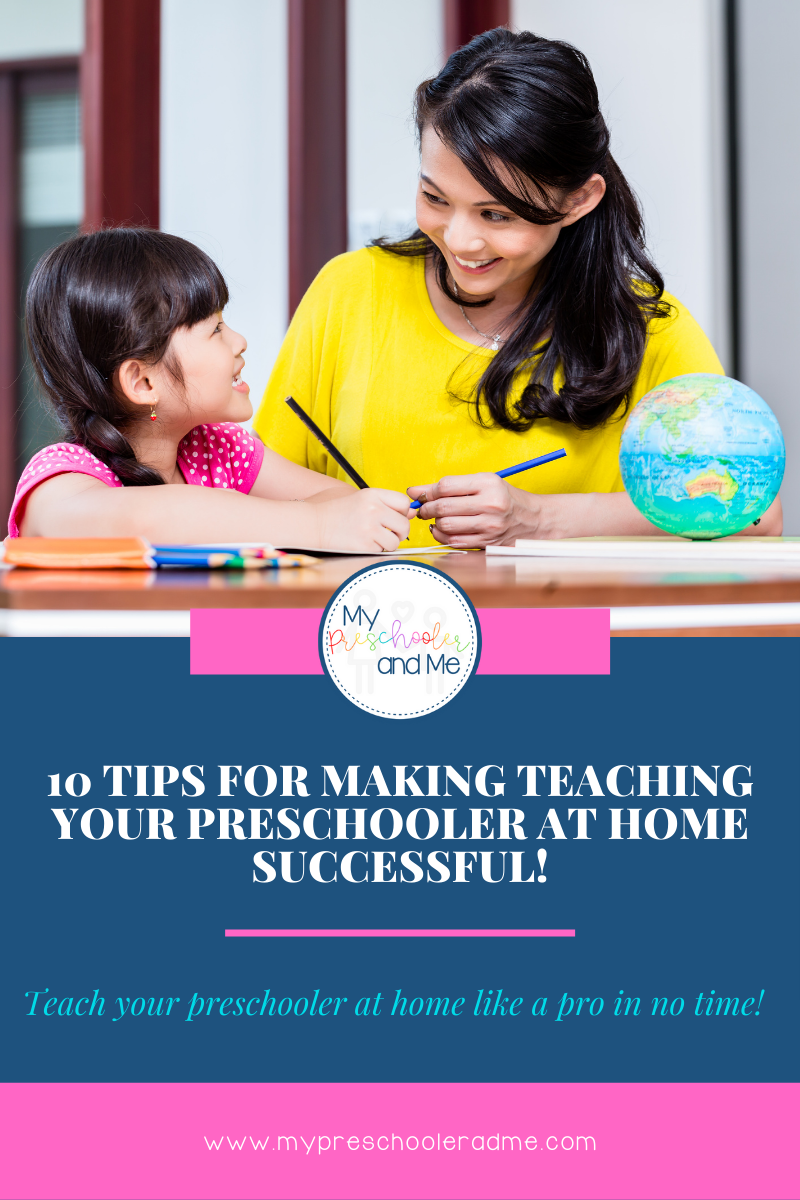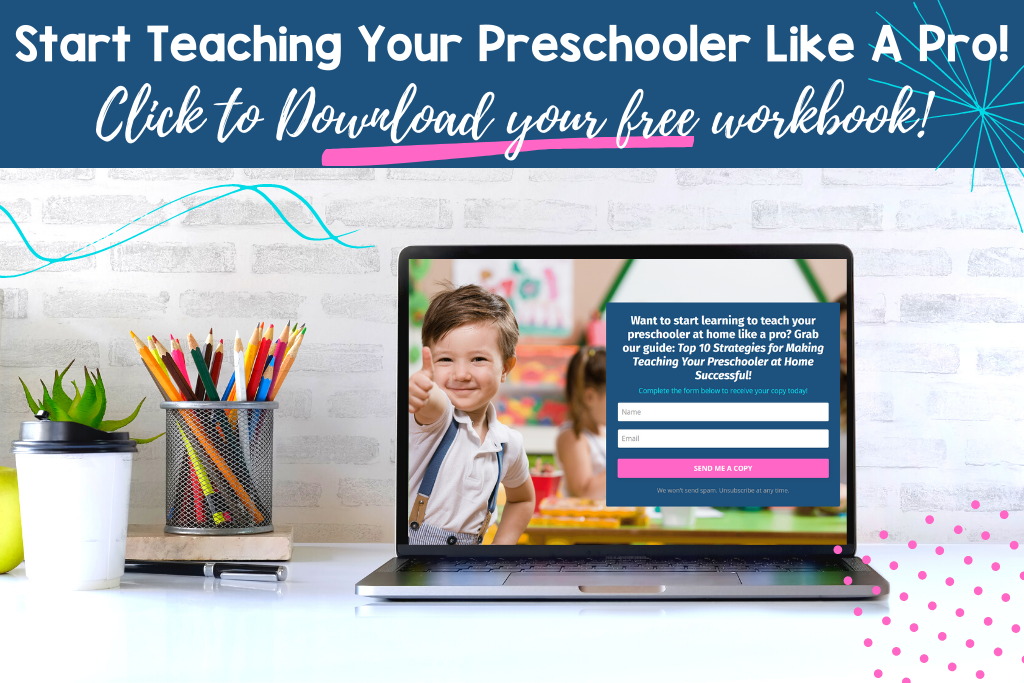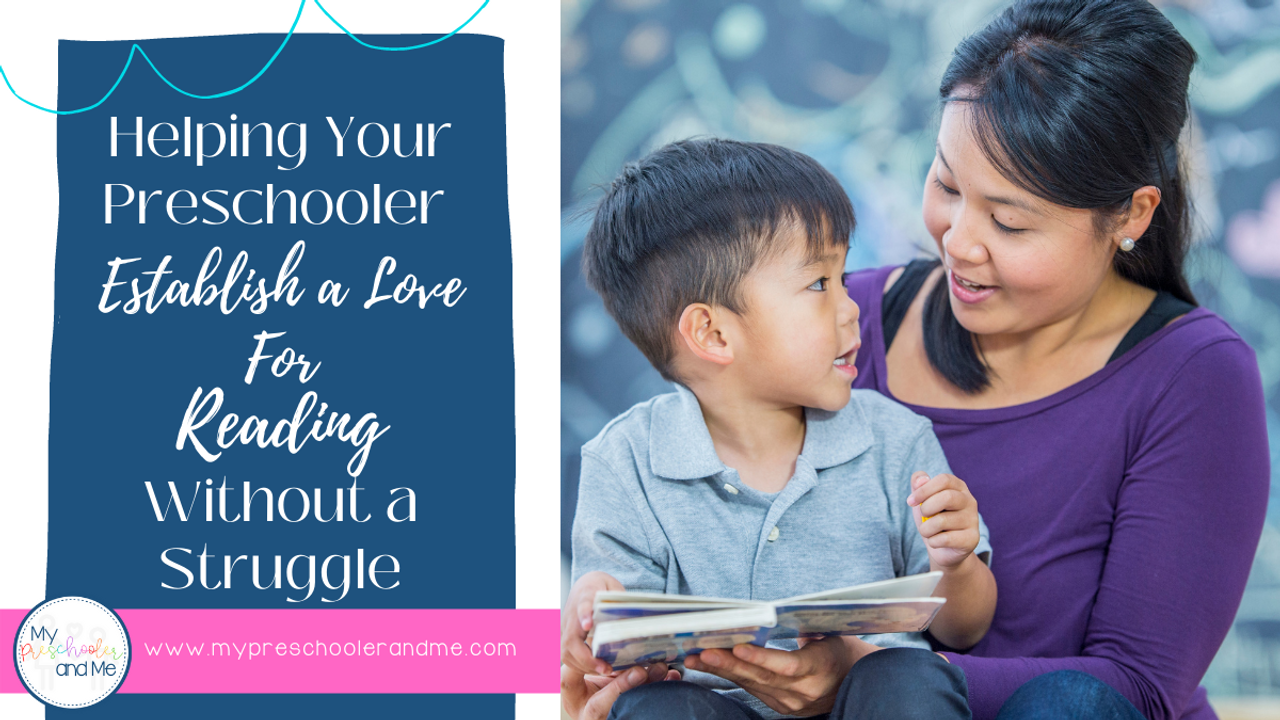
Helping Your Preschooler Establish a Love For Reading Without a Struggle
Helping your preschooler develop a love for reading is one of the most important gifts you can offer. Fostering a love for reading helps your preschooler deepen his or her imagination and starts the development of early literacy skills.
You might be surprised to find that one of the most beneficial activities you can do with your preschooler is to read together every day. I know parenting can be difficult and exhausting, but if you are looking for an easy way to accelerate your preschooler’s academic skills, reading together is the answer.
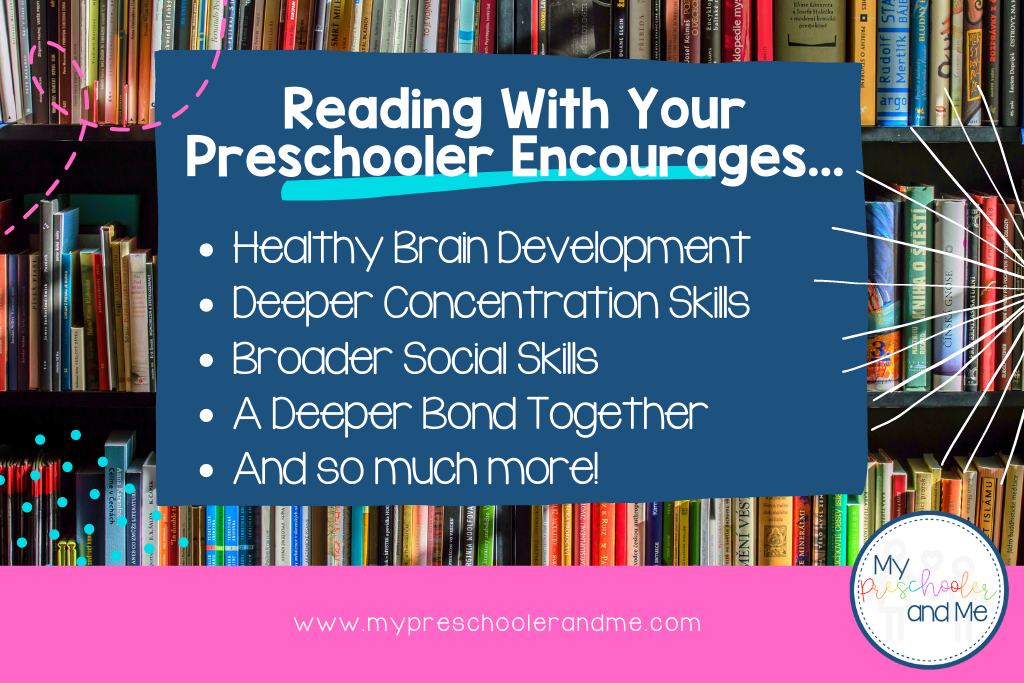
It truly is amazing just how many skills you can teach your child simply by picking up a book and reading together. Reading encourages healthy brain development, deeper concentration skills, widens your child’s social skills, helps you and your child develop a deeper bond, and so much more!
Listening to books being read aloud is just the beginning of your preschooler’s journey to kindergarten. If you are looking for more tips on how to effectively teach your child at home, you can download a free copy of my workbook called 10 Tips for Making Teaching Your Preschooler at Home Successful. Find your copy of the workbook here.
The Importance of Reading to Preschoolers
Each time you open a book, you are broadening your child's understanding of the world in which he or she lives. You can take your child anywhere and teach him or her about any topic just by reading a book.
Reading together introduces your preschooler to early literacy skills. The development of these early literacy skills would include things like building vocabulary, learning how to use language appropriately, and being introduced to various sounds we use to create words.
It’s no secret that young children learn best through play and observation. As we repeatedly model a skill such as reading, children naturally pick up on the things they observe.
Your child may go from holding his or her book upside down to suddenly holding the book the correct way, or your preschooler may start to distinguish the front of the book from the back. All these skills were developed by simple observations over time.
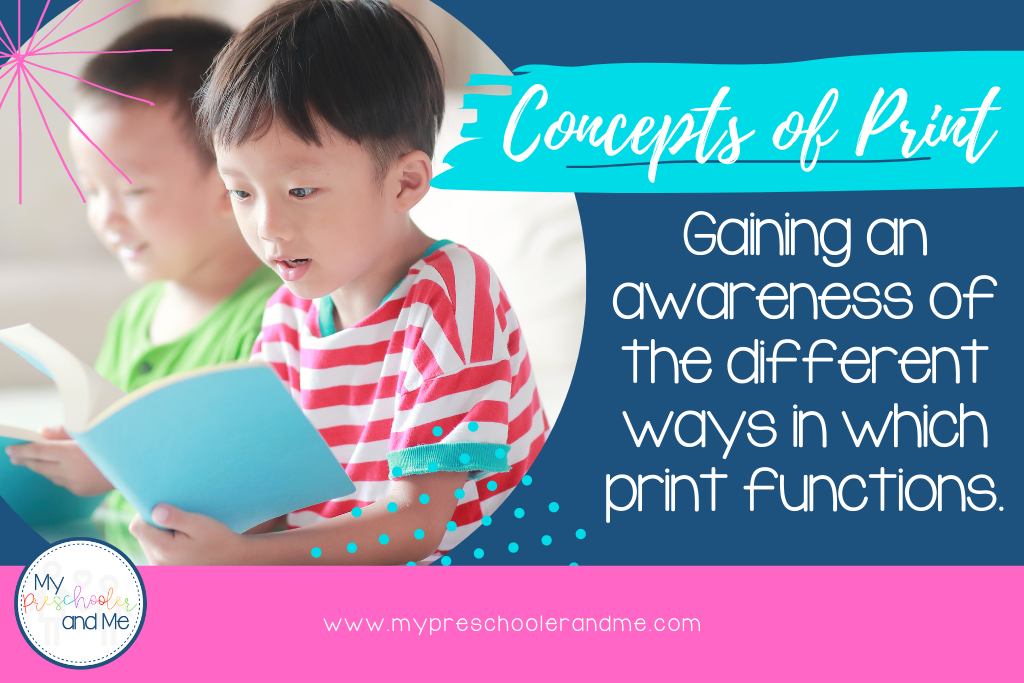
Reading a book together introduces your child to basic concepts of print. The definition of concepts of print is simply gaining an awareness of the different ways in which print can work.
When children have a basic understanding this term, they can do things like point to the title of a book, notice words on the pages of books, and they can demonstrate that books are read from front to back.
Keep in mind that preschool children are not expected to be able to read independently. That’s why we as parents and caregivers need to read to our preschoolers every day.
How to Introduce Reading to Preschoolers
If you are wanting to begin reading to your preschooler daily, it’s important to establish a reading routine as soon as possible. Preschoolers thrive on routines because routines provide children with a sense of stability.
You can read more about the importance of creating routines and establishing an easy preschool schedule at home by clicking here.
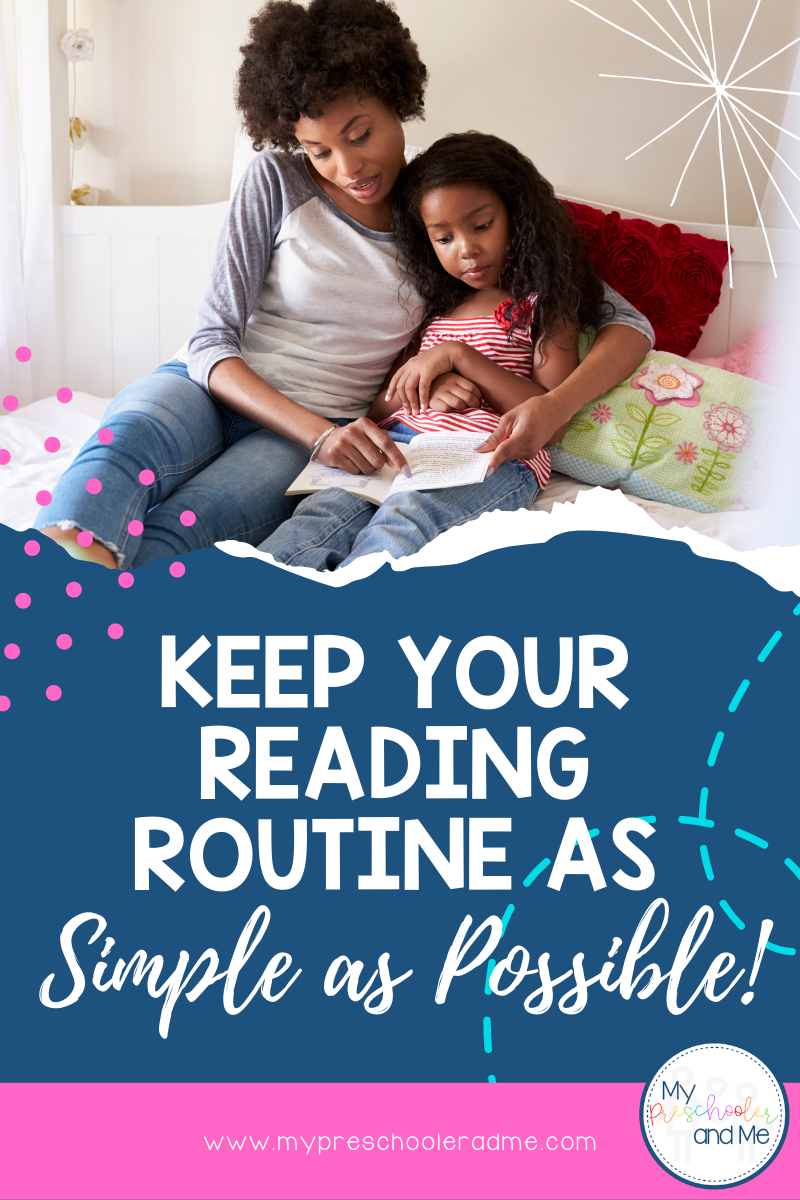
As you introduce reading to preschoolers, you're reading routine needs to be predictable when possible. An example of a predictable routine could be reading a book to your child each night before going to bed.
Another example could be reading to your child each day while he or she eats lunch. It's entirely up to you how you would like to structure your reading routine, but it's important to remain consistent and keep it simple.
Once you determine what part of your day will work best for your reading routine, you can introduce the new routine to your child. Have a conversation with your child about why reading is so important.
Talk about why you are going to set aside this special time to read together each day. It won’t take long for your child to begin understanding the importance of reading together, too. Once you have told your child about the new routine, begin implementing it.
Initially, it may take a lot of practice on both you and your child’s part, but over time, it will become easier and a very natural part of your day. You will know your reading time has become an established routine once your child begins to remind YOU it’s time to read together.
Engagement Strategies for Reading to Preschoolers
One of the main things to consider when reading to preschoolers is how you will keep the child engaged in the story. Honestly, it’s not as difficult as you might think. Yes, some children naturally love listing to stories whereas others do not enjoy it as much.
It’s not mentioned on the list below, but no matter what you do, be sure to KEEP READING FUN! In addition, try following some of these simple tips and strategies to help hold your child’s attention.
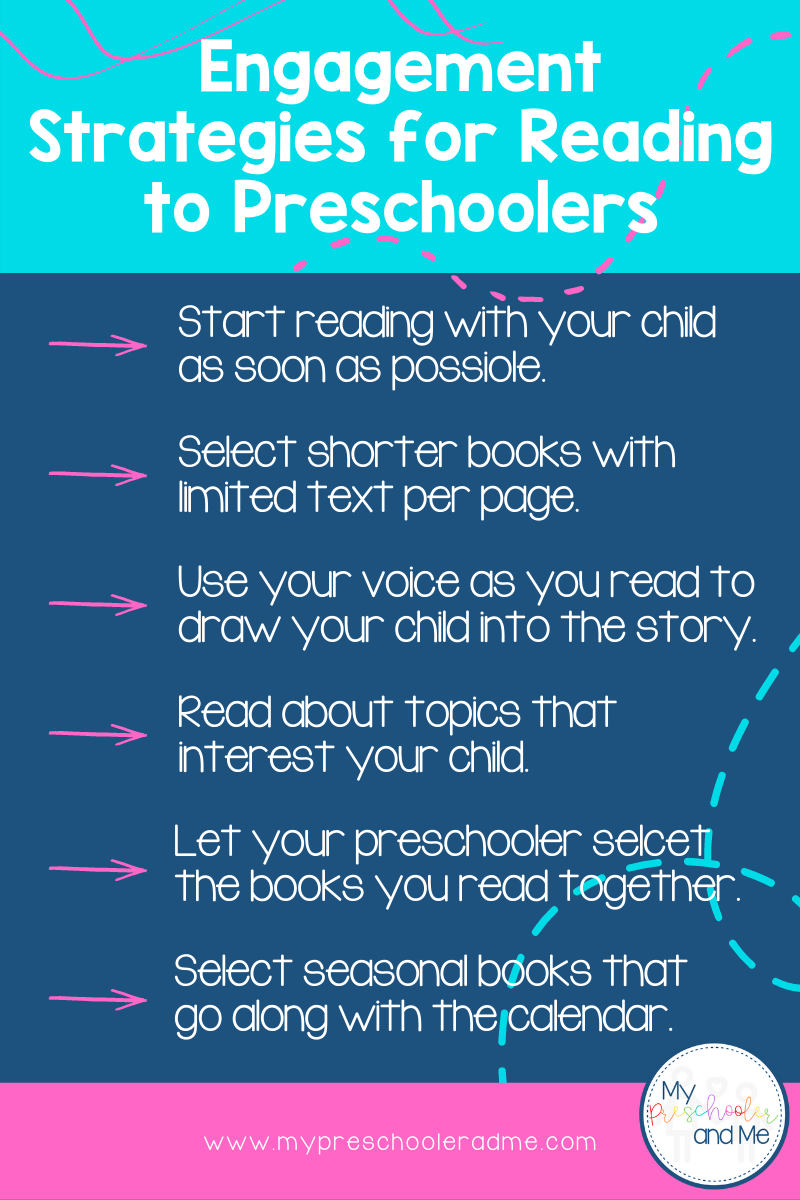
Start reading with your child as early as possible.
The best time to begin reading to your child is at birth. Some parents even begin reading to their unborn baby as it is developing.
Obviously, this is not the case for every family and that’s perfectly fine. However, it’s important to remember that the sooner you can establish a reading routine with your child, the better.
If you’d like to get started, commit to creating a solid reading routine with your child today. It’s never too late to establish a new, healthy habit.
Select shorter books with limited text per page.
We have to consider the attention span of the average preschooler. Technically, preschoolers should only be expected to sit for one minute per year old. So, if you have a four-year-old, your child should only be expected to sit for four minutes. Therefore, things like chapter books are not age-appropriate for preschoolers.
You should select books that only have 2-3 sentences per page and also have a limited number of pages in the book. There is no “one-size fits all” for this rule, but if your child seems disinterested after about 4-5 minutes, you may want to aim for a shorter book next time.
Use your voice as you read to draw your preschooler into the story.
One of the best tools you have to naturally create engagement as you read is your own voice. As you are reading the story, pay attention to how your reading sounds. Avoid using a monotone voice because this will bore your child. Use various pitches and change up your volume as you are reading.
The more interest you can create with your vocal movements, the better. The different sounds you use will draw your child into the story all while modeling how to read text aloud.
Read about topics that interest your child.
Just like adults, children have topics that they find more interesting than others. Think about the things your child enjoys. Does your son or daughter love bugs, weather, animals, or trains? Perhaps your child is super interested in the weather. Once you narrow down your child’s interests, try to find books to read that involve those topics.
Keep in mind that your child’s interests will most likely change over time. Remember to reevaluate the topics you select periodically to ensure your child remains engaged while reading with you.
Let your preschooler select the books he or she wants to read.
Something fun and educational you could do together would be to visit the children’s section of your local library. Libraries are filled with children's books covering a variety of topics. You might be surprised by the different books your child is drawn to while at the library.
Don’t be intimidated by the library. If you need a refresher on how to look for books, take a look at the YouTube video called How To Find Books in the Library.
If you don't have access to a local library, you can always have your child pick out two or three books from your bookshelf at home. Keep these books in a basket or safe place for reading throughout the week.
Select seasonal books that go along with the calendar.
Following your calendar can be a helpful guide for choosing topics to read about. Think outside the major holidays like Christmas and Halloween.
Instead, think about the season you are currently experiencing, the clothing you wear during that season, places you are going to visit now, etc. Basically, think about what makes sense to be learning about this time of year.
Here is an example of how this would look in action. If I am following the United States calendar, and I wanted to teach my child about animals in winter, I would not want to select this topic for July. Since July means summer and hot weather, my child isn’t going to be thinking about winter when it's hot outside.
The best time of year to read about animals in winter would be January or February when the weather outside feels cold. Anytime you can relate the topics you’re reading about to real-world experiences, you help your preschooler create connections with the story.
Connections are important because they help children remain engaged while reading. Connections also deepen children’s comprehension.

Reading to your child shouldn’t be a struggle. Starting a new routine may seem like an overwhelming thought at first. However, if you keep your child’s best interests in mind, it makes starting the routine easier on everyone.
Take some time to reevaluate the books you are choosing, the topics you're reading about, and most importantly, the length of books you are selecting. Making slight alterations to your current routine could be all it takes to go from a difficult reading time to an enjoyable experience together.
Do you need book suggestions for your preschooler? Check out these book lists from some of our preschool blogger friends:
- Play To Learn Preschool: The 10 Books Every Preschooler Should Have
- Stay At Home Educator: Every Toddler Needs These 10 Books
- Pocket of Preschooler: Book Lists
Before you go, I’d like to offer you a copy of my free workbook called 10 Tips for Making Teaching Your Preschooler at Home Successful. Before you know it, you’ll be on your way to teaching your preschooler like a pro in no time! Download your copy by clicking here.
Happy Teaching!
*Do you have an elementary-aged child who struggles to read? Check out this post, 5 Ways to Help Your Struggling Reader At Home, for some helpful tips that are sure to get your child reading in no time.
